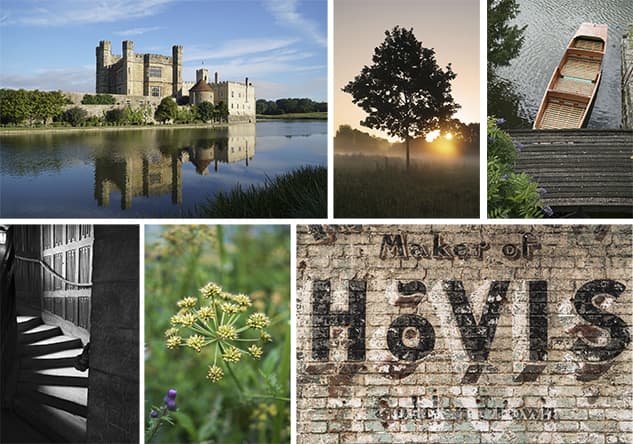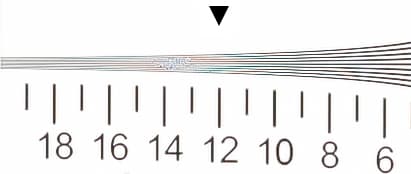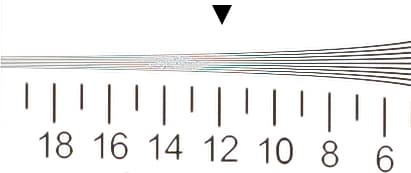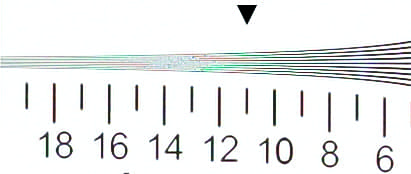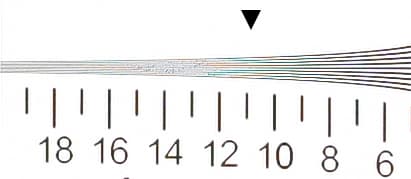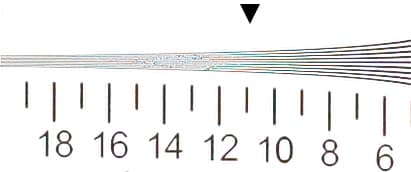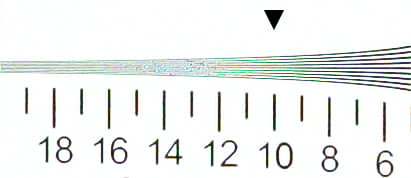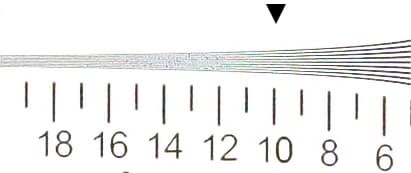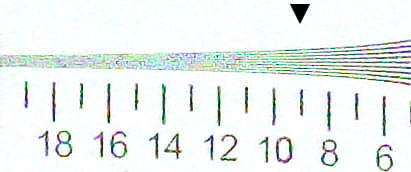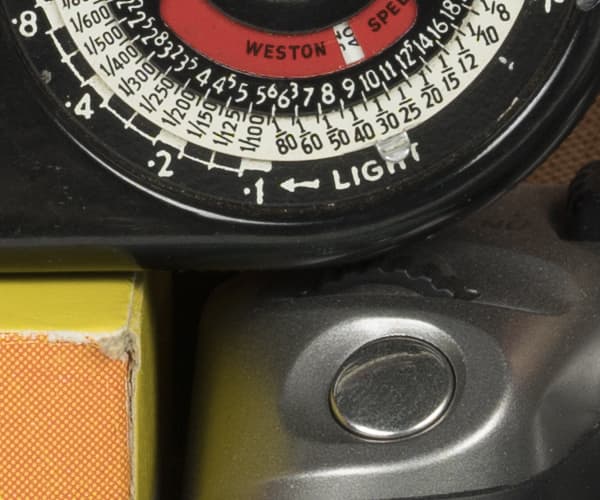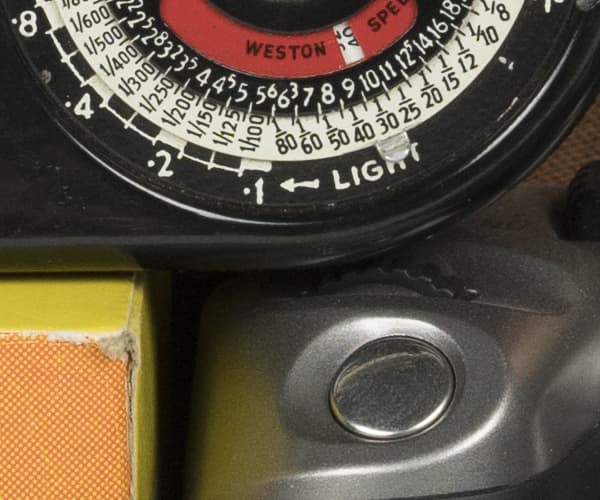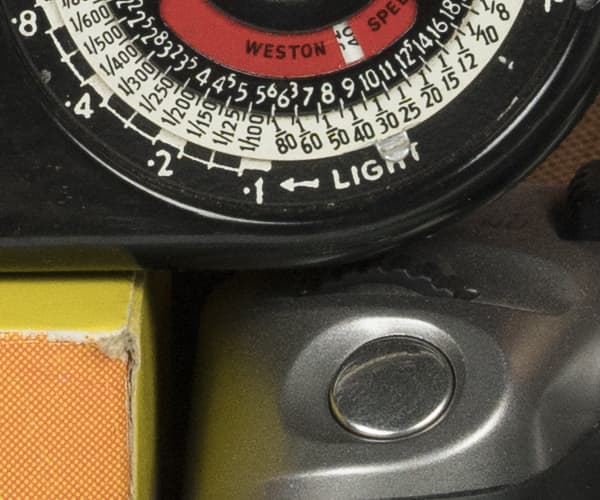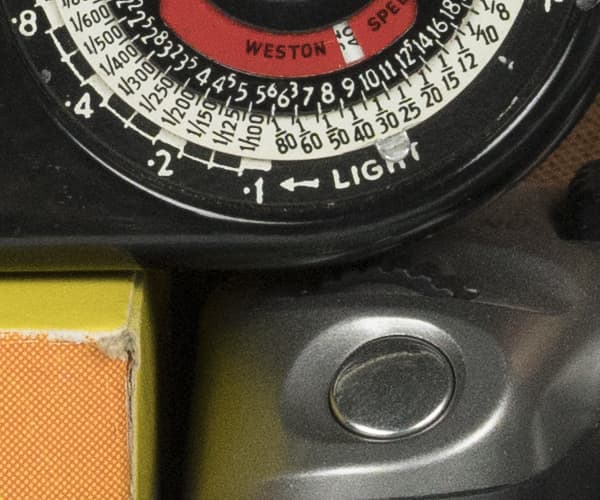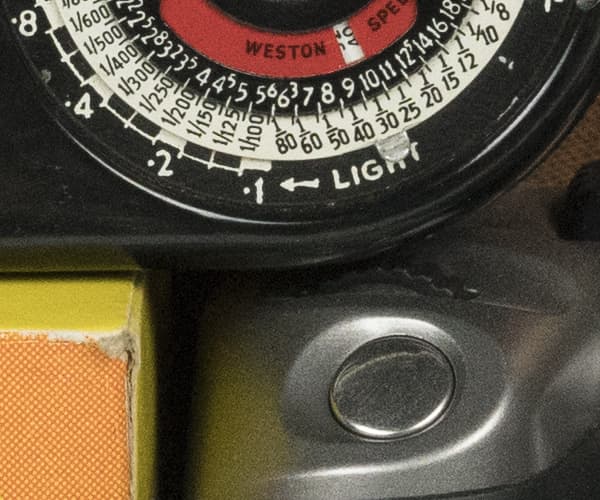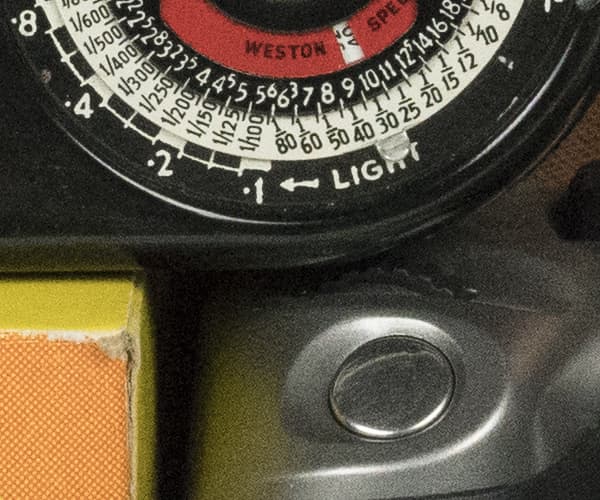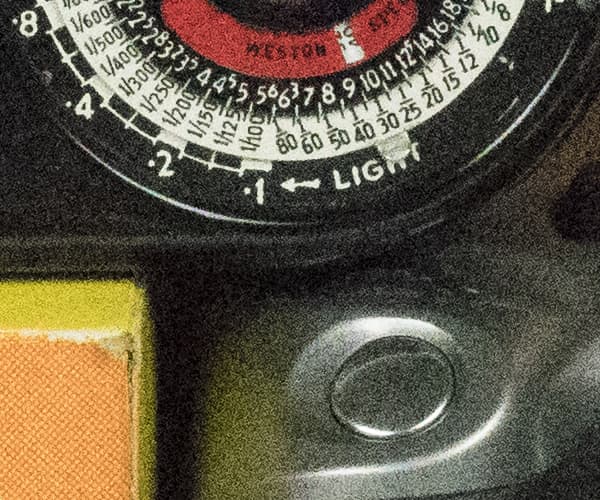Sony Alpha 7R II Review: Introduction
At a glance:
- 42.2MP full-frame Exmor R CMOS sensor
- 0.5in 2.4-million-dot OLED EVF
- ISO 100-25,600 (standard), 50-102,400 (expanded)
- 399 phase-detection AF points
- 5fps continuous shooting
- 4K video (100Mbps)
- £2,599 body only
The last time I laid hands on a Sony Alpha 7R was just after its launch, and at the time I remember holding onto what felt like something truly special. The Alpha 7R stood out from all other cameras for a number of reasons. Not only did it feature the highest resolution sensor in the history of Sony’s Alpha lineup, it was successful at squeezing its full-frame sensor behind the E-mount and into a body that’s a fraction of the size and weight of many DSLRs. The incredible level of detail recorded by its 36-million-pixel sensor put the Alpha 7R on a par with its high-resolution DSLR rivals, however the limited number of full-frame E-mount lenses available back then – not forgetting a few handling and operational quirks – were factors that put some photographers off the thought of trading in their kit and switching systems.
Keen to iron out the criticisms of the original Alpha 7R, Sony has launched the Alpha 7R II. Though its styling and design may appear similar, there’s a lot more than meets the eye and it’s an entirely new offering that introduces innovative technology and many exciting features. Is this finally the full frame camera we’ve all been waiting for?
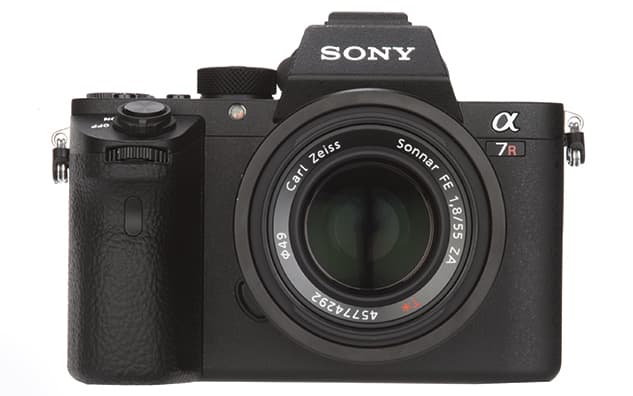
The styling is similar to the original Alpha 7R, but the Alpha 7R II is an improvement in a number of key areas
Sony Alpha 7R II Review: Features
With so much to talk about, it’s difficult to know where to start, so let’s first focus our attention on the Alpha 7R II’s new sensor – which is the world’s first back-illuminated full-frame chip with a resolution of 42.4-million-pixels. The new Exmor R CMOS sensor has never been used before in any other camera and the jump up from the Alpha 7R’s 36.4-million-pixels sees the 7R II edge closer to the 50.6-million pixel resolution offered by the Canon EOS 5DS and 5DS R. The benefit of the sensor’s back-illuminated structure is designed to enhance the Alpha 7R II’s light-gathering capabilities, which is reflected in its sensitivity range. Unlike the original Alpha 7R that could shoot between ISO 50-25,600, the Alpha 7R II now covers ISO 100-25,600, which can be expanded to ISO 50-102,400.
To handle the vast volume of data created by the 42.4MP sensor, the Alpha 7R II is equipped with Sony’s high-speed Bionz X image processor – the same engine as used within the Alpha 7R. It allows the camera to shoot continuously at up to five frames per second, which despite not being rapid by continuous shooting terms, matches the continuous burst rate offered by both the Nikon D810 and Canon’s EOS 5DS/5DSR models.
For those who don’t want to get bogged down by shooting 42.4MP images, Sony gives users the option to reduce the image size to 18MP or 11MP. It should be noted though, that these image sizes only apply to the JPEG file format and there’s no option to select a smaller file size when shooting in the raw format, unlike some DSLRs. For those who shoot raw, the Alpha 7R II’s raw files typically weigh in between 43-44MB per image.
Rather than relying upon a contrast-detection system for focusing like the Alpha 7R, the Alpha 7R II introduces a fast-hybrid AF system that’s comprised of 399 phase-detection and 25 contrast-detection focus points. It’s superior to the Sony Alpha 7 II’s hybrid AF system and covers up to 45% of the image area. With this I expect to see a noticeable improvement in acquisition speed compared to the Alpha 7R, both with the attachment of full-frame E-mount lenses and other manufacturers’ lenses, which I’ll touch on shortly.

The original Sony Alpha 7R (left) positioned alongside the Sony Alpha 7R II (right) with Canon EF 16-35mm f/4 L IS USM lens attached via a Metabones adapter
Another feature that we could foresee making its way into the Alpha 7R II was the 5-axis, in-body image stabilisation system that made its debut in the Alpha 7 II. This advanced technology has the ability to not only compensate for the familiar pitch and yaw movements, but also corrects for movements of the camera vertically and sideways. The fifth axis corresponds to the rotational correction around the lens axis – crucial for shooting movies and ensuring high-resolution handheld images remain sharp. The benefit of having this new stabilisation system on the Alpha 7R II is to allow the use of shutter speeds 4.5 stops slower than would otherwise be possible. However, it also opens up the possibility of shooting stabilised images no matter what lens is mounted – be it a zoom with optical stabilisation built-in or a prime lens without.
And the new features don’t end here. The Alpha 7R II introduces a reduced-vibration shutter that’s tested to 500,000 cycles and is designed to cut mechanical front and rear curtain vibration by up to 50% compared to the 7R. The electronic front curtain shutter is switched on from the main menu and a silent shooting mode is found just above it. Switching the latter on disengages the electronic front curtain shutter and engages the Alpha 7R II’s electronic shutter. Though this doesn’t provide users with the advantage of using any faster shutter speeds (operating up to 1/8,000sec like the mechanical shutter) it is completely silent and could be useful for those who like to shoot discreetly. Those who use the silent shooting mode will want to be wary of the rolling shutter phenomenon though, whereby fast moving subjects can appear skewed or distorted.

The rear of the camera is similar to the Alpha 7R but modifications are made to the mode dial and command dials
Elsewhere, there’s a 0.5in, 2.4-million-dot OLED EVF that improves upon the Alpha 7R by featuring a double-sided aspherical lens that delivers a higher 0.78x magnification. Below it you’ll find the same 3in, 1.23-million-dot display, which doesn’t feature touch functionality, but is the tilt-angle variety. Wi-Fi connectivity and NFC for instant pairing to compatible devices is supported, there’s an anti-dust mechanism that can be used to vibrate any dust particles adhering to the sensor and though there’s no built-in flash, the hotshoe accepts Sony flash units as well as third-party alternatives. Also supplied in the box of contents are two NP-FW50 batteries, which are good for around 300 shots each.
Sony Alpha 7R II Review – Video Functionality
Sony hasn’t just concentrated on creating their best ever stills camera with the Alpha 7R II, they’ve created a camera that’s out to entice serious videographers too with a mightily impressive video spec. The inclusion of 4K-movie recording gives it an immediate advantage over the Alpha 7R, but it’s the way it’s capable of 4K internal recording with no pixel binning shooting in Super 35mm mode that sets it apart from what we’ve seen before in Sony’s Alpha 7-series. Using the XAVC-S codec it can record at a high 100Mbps bit rate in 4K – ideal for capturing fine movement details in movies, and 50Mbps is available in HD quality too.

The Alpha 7R II positions its headphone and microphone ports alongside the micro USB and micro HDMI interface
There’s a list of other professional video features, including ‘Picture Profiles’, which are becoming standard on most Sony cameras and allow you to fine-tune the look of movies by adjusting gradation, colour and detail before storing it as a profile for future use. ‘Time Coding’ and the ability to shoot in ‘S-Log2 Gamma’ will also appeal to videographers wishing to create a wider dynamic range for smooth graduation with reduced whiteout and blackout. Just as you’d expect from a camera that’s so well suited to videographers, it also features a pair of 3.5mm ports on its side for audio monitoring and connecting an external microphone.
Sony Alpha 7R II Review – Build & Handling
The Alpha 7R II’s design might not be radically different to the Alpha 7R, but the small changes that have been made combine to make it a much more pleasing camera to handle and operate. I never found the twin dials the Alpha 7R inherited from the NEX-7 to be the most enjoyable to use and they’re now replaced by slimmer dials that are better positioned and offer improved grip. The relocated shutter button now resides on top of the handgrip in a much more comfortable position, freeing up space for an additional custom button on the top-plate. The mode dial is fractionally larger and features a locking button, while the annoying lip above the screen that made it slightly uncomfortable to use the menu and magnify buttons has been addressed by placing these on a 45° angle. The movie-record button is still awkwardly positioned on the corner of the body to the right of where the thumb lays to rest, and very little has changed with regard to the buttons and control wheel to the right of the screen.

The dials the original Alpha 7R inherited from the NEX-7 are now replaced by slimmer dials that are better positioned
Those with an eye for detail will notice ISO has now been assigned to the four-way controller, replacing what was white balance on the Alpha 7R. Another small refinement is the way memory cards are now inserted into the side of the body, which I also prefer to the way cards were pushed forwards into the original Alpha 7R.
In terms of its overall finish, Sony has strayed away from the clean, smooth, semi-gloss black finish of its forerunner, opting for a matte-black speckled finish that gives it a smarter, premium appearance. The hard plastic eyepiece on the Alpha 7R didn’t offer much in the way of cushioning, so it’s good to see Sony replacing this with a softer eyepiece, which provides increased comfort when the camera is raised to the eye.
Just like the Alpha 7R, the Alpha 7R II employs top, front and rear covers made of a rigid magnesium alloy. These contribute to an extremely solid and robust feel. Adding to this, the rubberised grip is nicely sculpted and fits the hand very well. Buttons and dials feature seals against dust and moisture, while the SD card slot and the areas of the housing that join together feature an interlocking system to prevent inclement weather and dust particles from reaching the internals. It’s also worth noting that all FE E-mount lenses available for the Alpha 7R II as well as the HVL-F43M (£275) and HVL-F60M (£439) flashguns feature sealing to the same level as Sony A7-series bodies.

Additional NP-FW50 batteries cost £65 each. There are third-party alternatives such as the Ansmann A-Son NP FW 50 (£29)
Those wishing to improve handling in the portrait format and hold two NP-FW50 batteries may be tempted by the new VG-C2EM battery grip (£249). Bearing in mind a single battery only holds enough charge for 270 shots with use of the EVF, it’s an accessory that’s certainly worth consideration. Though I didn’t get an opportunity to use it with the Alpha 7R II in this test, it’s an accessory that’ll help to prolong shooting time before you need to change batteries.
Sony Alpha 7R II Review – Performance
The Alpha 7R was criticised in a few areas of its performance, so it’s good to see Sony addressing and improving the Alpha 7R II in this regard. Though the Alpha 7R’s contrast detection system seemed perfectly adequate at the time and has been issued with firmware updates since, in low light – and when paired with other lenses via compatible adapters – it’s noticeable that it doesn’t provide the fastest autofocus acquisition speeds by today’s standards.

Attaching the Canon EF to E-mount Mark III Metabones adapter ahead of testing the A7R II with Canon L-series lenses
Setting up the Alpha 7R alongside the Alpha 7R II and running a series of side-by-side comparison tests in both high contrast and low-light conditions, revealed the new fast-hybrid AF system is a radical improvement on the Alpha 7R’s contrast-detect system. Though the Alpha 7R II locked on to subjects at a similar speed to the Alpha 7R in high-contrast conditions, it’s when the light levels drop that you really appreciate how much faster and more responsive the Alpha 7R II’s focusing system really is. Subjected to a low-light interior scene with the AF illuminator switched off on both cameras, there was no contest. While the Alpha 7R took some time to acquire focus on a central subject, the Alpha 7R II acquired focus in a fraction of a second.

The A7R II with the Canon EF 70-200mm f/2.8 L IS II USM attached via a Canon EF to E-mount Mark III Metabones adapter
I found similar results when I attached a Canon EF 70-200mm f/2.8 L IS II USM lens to both cameras, using the Canon EF to E-mount Mark III Metabones adapter that Sony provided for review. Compared to the original Alpha 7R that demonstrated hesitation at locking onto distant subjects, the Alpha 7R II locked onto the same subjects instantly with barely any fuss. The developments that have been made to Alpha 7R II’s autofocus performance make it a much more compelling choice for those wishing to use their existing lenses by mounting them via an adapter – including Sony users who may own Sony A-mount lenses and want to attach them via the LA-EA3 mount adapter (£129).
I tested the Alpha 7R II with both the stabilised Carl Zeiss Vario-Tessar T* FE 24-70mm f/4 ZA OSS lens and the non-stabilsed Carl Zeiss Sonnar T* FE 55mm f/1.8 ZA prime. When E-mount lenses with optical stabilisation are mounted (such as the 24-70mm) the in-body 5-axis system teams up with the OSS system of the lens, with the sensor correcting for rotational and translational movements, leaving angular movements to be compensated for by the lens’s stabilisation. With the electronic front curtain shutter and SteadyShot deployed I found it possible to shoot pin-sharp 42.4MP images handheld as slow as 1/20sec. Much like I did when I reviewed the Alpha 7 II, I found myself customising SteadyShot to the C2 button on the top-plate for quick-access and I found it useful to set up silent shooting to the C1 button beside it.
Another area of improvement to the performance is the aforementioned shutter. Even with the Alpha 7R II’s electronic front curtain switched off, the shutter is slightly quieter than the Alpha 7R. When the 7R II is switched on, the loud slap you get from the Alpha 7R is no longer there, and it’s a much less obtrusive camera to use when you’d like to work discreetly. Of course there’s the silent shooting mode too, which uses the electronic shutter. However, it doesn’t feature Sony’s new anti-distortion shutter technology, which was recently outfitted on the Sony Cyber-shot RX100 IV and RX10 II to minimise the effects of rolling shutter and allow both to shoot as fast as 1/32,000sec.
Sony Alpha 7R II Review – Image Quality: Dynamic Range
Dynamic Range
At the Alpha 7R II’s lowest native sensitivity, our dynamic range figures measured 13.1EV at ISO 100. This sensational readout puts it ahead of the Sony Alpha 7R, which measured 12.4EV at the same sensitivity. Results remain above 12EV right up to ISO 800, indicating there should be plenty of additional shadow detail retrievable from raw files. Beyond ISO 800, results drop slightly to 11.5EV at ISO 1,600 and 10.2EV at ISO 3,200. Pushing up to ISO 6,400 sees the dynamic range drop to 8.5EV, indicating that detail in dark areas of an image is increasingly lost to noise. As the chart above illustrates, figures remain above the critical 6EV right up to ISO 51,200, only dropping below at ISO 102,400.
Sony Alpha 7R II Review – Image Quality: Detail and Noise
It’s the image quality produced by the Alpha 7R II’s new back-illuminated sensor that most will be keen to read about. Those who’ve been waiting to find out how the sensor performs won’t be disappointed – the 42.4MP sensor produces astonishing results both in the lab and out in the field. As you’d expect, it resolves finer detail than the Alpha 7R and its 7952×5303-pixel resolution equates to a 22x15in or 57x38cm print at a critically sharp 300ppi output resolution. Just like Canon’s EOS 5DS and 5DS R models, the detail the sensor is capable of resolving really has to be seen to be believed. Just as impressive is the way the Alpha 7R II’s sensor controls noise. Staggering results are obtained at ISO 6,400 and useable results can even be obtained at ISO 12,800 and 25,600 by applying a touch of noise reduction.
To be expected from a 42.2MP sensor with no optical low pass filter, the Alpha 7R resolves absolutely outstanding detail. A close examination of our resolution chart at ISO 100 indicates it can resolve 4,800l/ph – not quite a match for the Canon EOS 5DS R’s 5,600l/ph result at the same sensitivity, but a stunning resolution performance nevertheless. The Alpha 7R II attains the same resolution up to ISO 200, dropping only slightly to 4,400l/ph at ISO 400. Detail holds up very well to ISO 3,200 and drops only slightly to 4,000l/ph at ISO 6,400. Push beyond ISO 25,600 and detail starts to drop off to 3,600l/ph at its highest two sensitivity settings.
Below are 100% crops from our resolution chart, shot using the Sony FE 55mm f/1.8 ZA Carl Zeiss Sonnar T* lens. Note that because of the Alpha 7R II’s high resolution we’ve shot from double the distance as usual, and the numbers on the graph need to be multiplied by 200 to get the resolution in lines per picture height.
Noise
There’s one word that sums up the Alpha 7R II’s noise performance and that’s sublime. Opening our raw files in Camera Raw and inspecting them closely at 100% revealed there’s barely a hint of luminance noise between ISO 100-1,600 and it’s of such fine texture at ISO 3,200 and 6,400 that what you can see of it under close magnification is easily removed by applying some noise reduction in post processing. Inspecting ISO 12,800 revealed it’s more than useable too, as is ISO 25,600 with a push. The detail the sensor resolves right up to ISO 25,600 is nothing short of outstanding.
Colours between ISO 100-25,600 are excellent, with saturation only starting to take a slight hit at ISO 102,000. As for JPEGs, the in-camera noise reduction does take the edge off the finest detail as you start to encroach upon ISO 6,400, so it’s certainly advised to shoot in raw when you find yourself pushing the Alpha 7R II’s sensor to the extremes of its ISO range.
Sony Alpha 7R II Review – Verdict
While there are some cameras that offer incremental upgrades over their predecessors, the Sony Alpha 7R II isn’t one of them. The Alpha 7R II is a huge step up from the Alpha 7R and the improvements that have been made address many of the criticisms of its predecessor. The accuracy and speed of focusing, particularly in low light and when third-party lenses are used in conjunction with adapters is drastically improved, thanks to the appointment of the new fast-hybrid AF system. The noisy shutter issue has been addressed, the introduction of Sony’s superb 5-axis image stabilisation technology is helpful for achieving pin-sharp results when it’s used handheld and the performance of the 42.4MP sensor is absolutely sensational. The way it controls noise and handles detail right up to ISO 25,600 is a real eye-opener.
Though the handling is yet another area that’s been refined, I’d still like to see a larger scroll dial added at the rear alongside a touchscreen. Then there’s the battery life, which isn’t as good as the Alpha 7R and, as we’ve reported before, it’s a compromise you have to make for choosing a small, but immensely powerful camera. It’s good that Sony provide two batteries in the box, but those who plan to venture away from mains power for long periods are strongly advised to pack an additional set of batteries, as well as a USB cable and power bank for an emergency.
Sony’s current lineup of 11 E-mount full-frame format lenses means there’s no longer the limited supply of lenses there was when the original Alpha 7R arrived. There are also plans to expand Sony’s FE line to 20 lenses by 2016, so there’ll certainly be no shortage of glass to choose from in the future. If you’re sitting on the fence wondering whether the Alpha 7R II is worth changing to from a heavy and bulky DSLR, I’d highly recommend you try it. If you’re anything like me, you’re likely to find yourself checking your bank balance to work out if you can afford it. One thing’s for certain – if you do bite the bullet and settle for the Alpha 7R II you won’t be dissatisfied by its results and you’ll be a proud owner of one of the finest compact full-frame cameras available.




